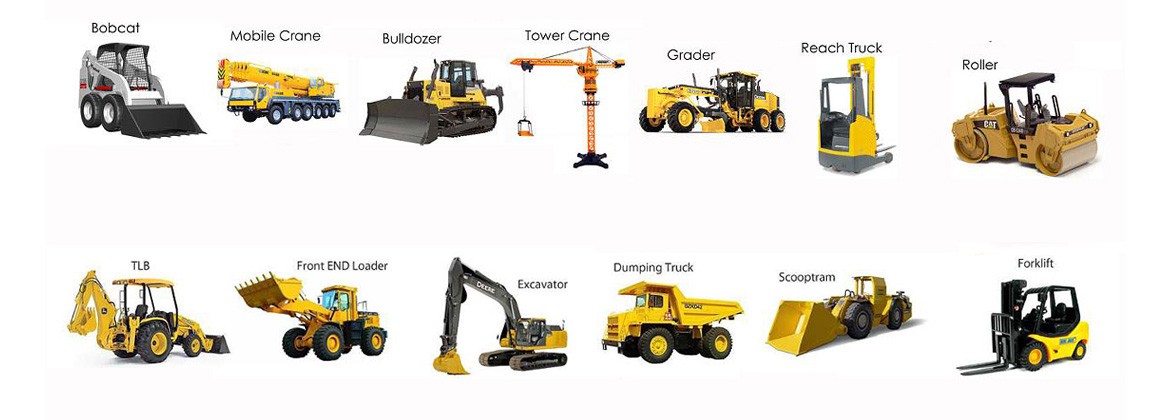Renting Out Vs. Buying Building And Construction Devices: Making the Right Selection for Your Task
When embarking on a construction task, one of the critical decisions that project stakeholders and managers face is whether to lease or purchase building tools. The decision hinges on different factors such as price considerations, project duration, tools upkeep, risk, scalability, and versatility administration.
Expense Considerations
When examining the financial facet of getting versus renting construction tools, the upfront expenses and long-term costs should be carefully taken into consideration. Renting out tools frequently calls for reduced first repayments compared to acquiring, making it an attractive alternative for temporary projects or service providers with budget restrictions. Renting removes the demand for large funding investments and decreases the monetary risk linked with tools possession, such as maintenance and depreciation prices. Nevertheless, over time, continuously renting equipment can gather greater expenses than purchasing, especially for prolonged jobs.
On the other hand, buying building and construction tools includes greater in advance prices yet can result in long-term savings, especially for regular customers or long-lasting projects. Eventually, the decision in between purchasing and leasing building devices pivots on the task's duration, frequency of usage, budget plan considerations, and long-term monetary goals.
Job Duration

On the other hand, for long-term jobs or ongoing building job, buying equipment could be the much more cost-effective choice. Buying devices can cause set you back savings over time, particularly if the equipment will be regularly made use of. Moreover, having equipment gives a feeling of control over its accessibility and permits for personalization to fit particular job needs.

Equipment Upkeep
Given the important role project duration plays in figuring out the most affordable strategy in between leasing and buying construction devices, the focus now moves in the direction of checking out the crucial facet of tools maintenance. Appropriate maintenance is essential for ensuring the optimal efficiency and durability of building equipment. Leasing equipment typically comes with the benefit of having properly maintained equipment offered by the rental company. This can alleviate the worry of maintenance tasks from the project proprietor or service provider, conserving time and initiative. On the various other hand, having tools calls for an aggressive check my blog strategy to maintenance to stop breakdowns, make certain security, and extend the equipment's lifespan. Normal assessments, servicing, and timely repair services are essential to keep owned equipment in top functioning problem. Consider upkeep costs when choosing between renting and purchasing, as disregarding maintenance can cause pricey repair services, downtime, and job delays. Ultimately, a properly maintained construction tools fleet, whether rented out or had, is crucial for the successful and effective conclusion of building projects.
Adaptability and Scalability
In the realm of construction equipment management, the aspect of adaptability and scalability holds significant significance for project efficiency and source use. Opting to rent construction tools supplies a high degree of flexibility as it allows for the quick change of equipment kinds and amounts based on the developing demands of a project. Renting out makes it possible for service providers to access a wide variety of specific tools that might be needed for specific jobs without the lasting commitment of ownership. This flexibility is specifically beneficial for projects with varying needs or uncertain durations (mini excavator rental).
Renting out building and construction devices uses the click to find out more advantage of conveniently scaling procedures up or down as project needs change. Professionals can promptly add or exchange equipment to match the job's altering demands without the restraints of owning assets that may end up being underutilized or out-of-date.
Danger Administration
Reliable threat management in building tools procedures is paramount to guaranteeing task success and mitigating possible economic losses. Building tasks inherently include numerous dangers, such as tools break downs, mishaps, and task delays, which can considerably impact the job timeline and budget plan. By very carefully considering the risks connected with owning or renting out building devices, task managers can make informed choices to minimize these possible risks.
Renting building equipment can offer a level of threat mitigation by transferring the duty of repair and maintenance to the rental firm. This can reduce the economic problem on the job owner in situation of unanticipated devices failures (aerial lift rental). Additionally, leasing provides the adaptability to access customized tools for certain job stages, minimizing the risk of owning underutilized machinery
On the various other hand, having building devices provides a sense of control over its use and maintenance. Nevertheless, this likewise implies birthing the full obligation for repair work, upkeep prices, and depreciation, raising the financial threats connected with equipment ownership. Careful risk analysis and consideration of factors such as job period, devices utilization, and upkeep needs are critical in determining one of the most suitable alternative for effective risk management in building tasks.
Final Thought
To conclude, when deciding between purchasing and renting building equipment, it is vital to think about price, project duration, devices maintenance, danger, scalability, and versatility monitoring. Each factor plays a vital function in identifying the most suitable alternative for the task at hand. By thoroughly reviewing these aspects, project supervisors can make an enlightened choice that lines up with their budget plan, timeline, and overall job objectives.
